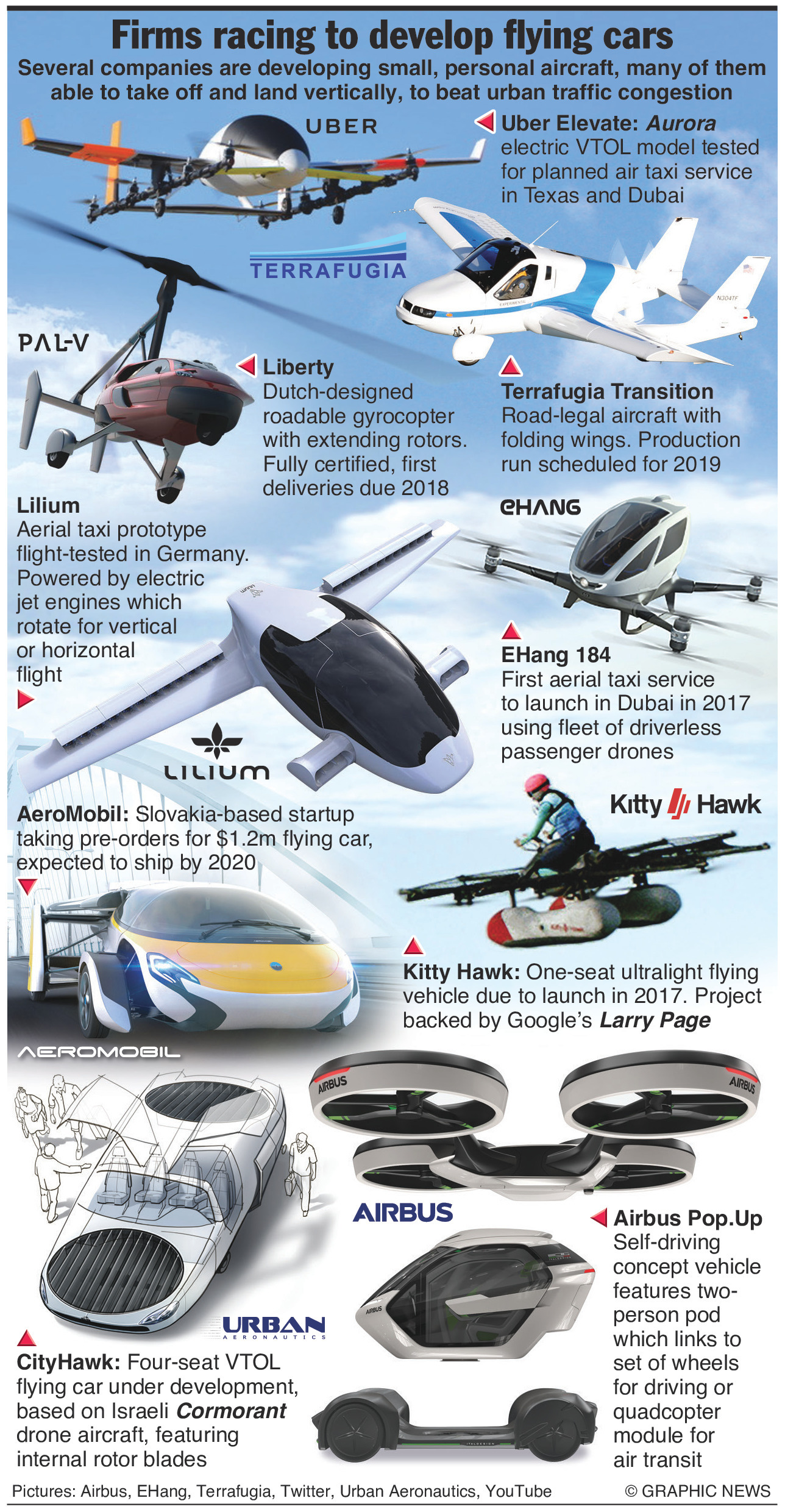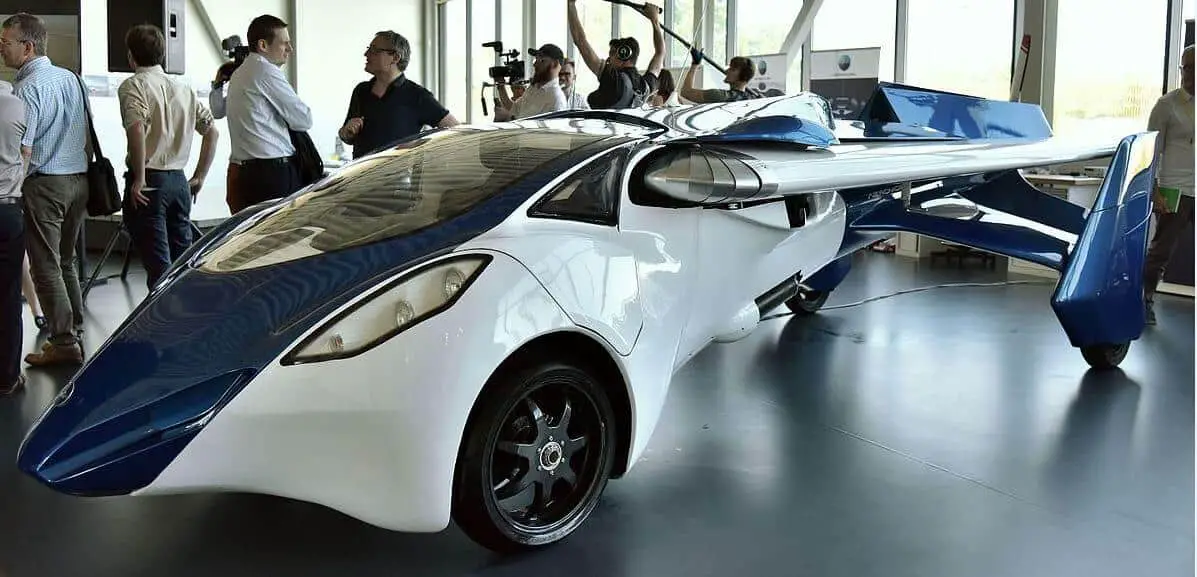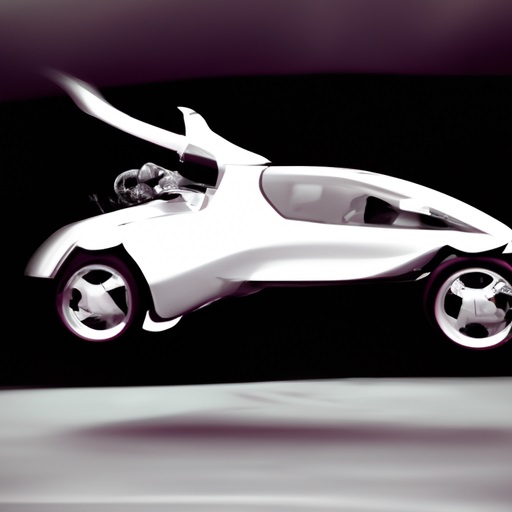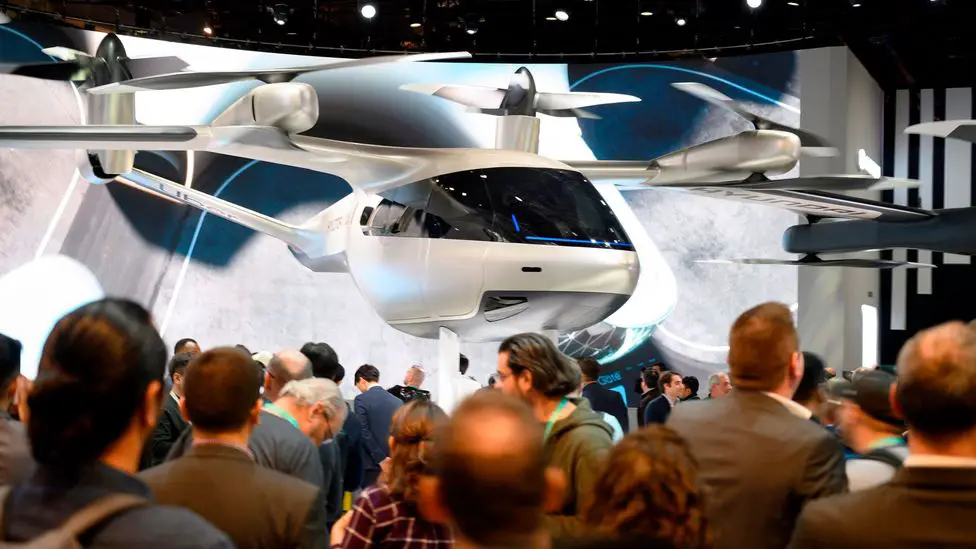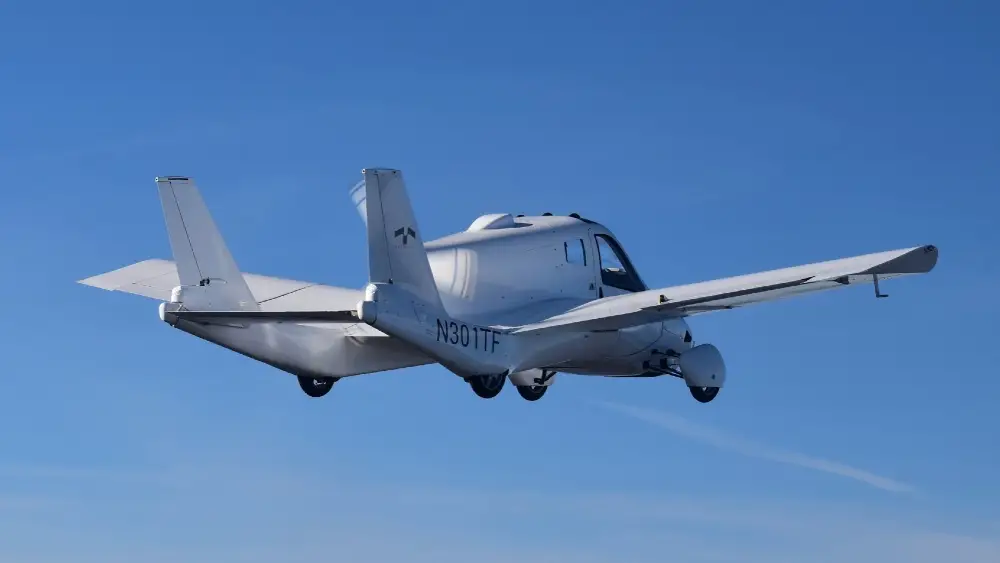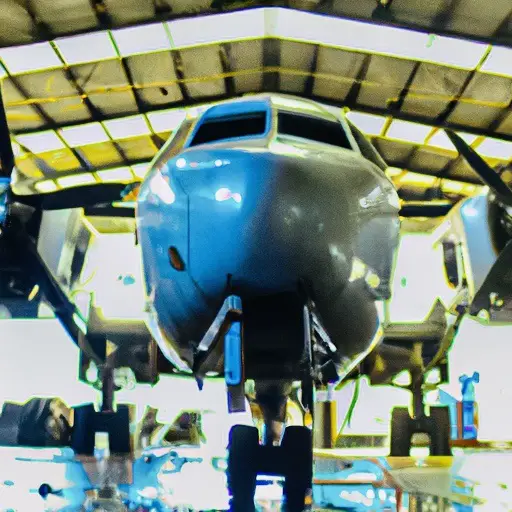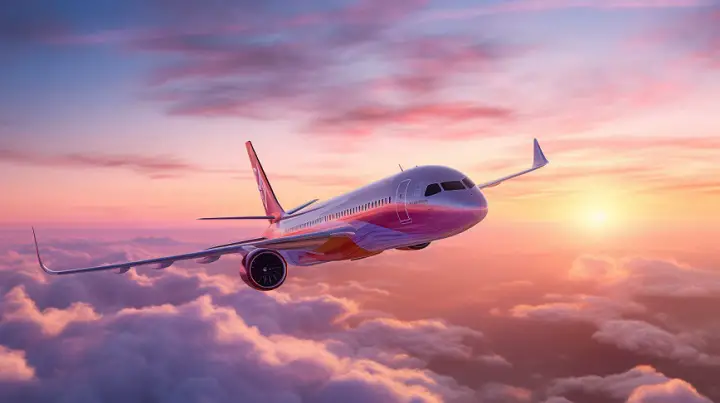
Flying Car: All You Need to Know
Advancements in technology are revolutionizing transportation as we know it, and flying cars are at the forefront of this transformation. These vehicles hold the potential to completely change the way we move from place to place, with an impact that could be felt for decades to come.
In this comprehensive guide, we’ll explore all you need to know about flying cars – from the history of their development to the latest advancements in technology. We’ll take a look at the working mechanism of flying cars, the potential benefits they offer, the challenges and concerns associated with them, and much more. By the end of this guide, you’ll have a complete understanding of this exciting new technology and its potential impact on the future.
History of Flying Cars
Flying cars have been a dream of transportation enthusiasts for over a century. The idea of a vehicle that could both drive on roads and take to the skies has captured the imagination of inventors and scientists around the world.
The first prototype of a flying car was built in 1917 by Glenn Curtiss, a prominent aviation pioneer. This early model, called the Autoplane, was essentially a modified Curtiss Model T automobile with a detachable biplane wing and a tail section. Despite some initial success, the Autoplane never achieved widespread adoption due to safety concerns and the high cost of production.
| Year | Event |
|---|---|
| 1937 | The Waterman Aerobile |
| 1949 | The Taylor Aerocar |
| 1956 | The Moulton Taylor Aerocar |
Throughout the 20th century, several inventors and companies attempted to create flying cars, with varying degrees of success. Notable examples include the Waterman Aerobile in 1937, the Taylor Aerocar in 1949, and the Moulton Taylor Aerocar in 1956. However, these early prototypes faced numerous technical and regulatory challenges, and none of them achieved commercial viability.
“The flying car is a classic symbol of American futurism, representing the boundless optimism and ingenuity of our society.”
It wasn’t until the 21st century that the concept of a flying car began to receive serious attention once again. With advances in technology and a growing interest in urban air mobility, a new wave of entrepreneurs and engineers began to explore the possibilities of flying cars.
Challenges Faced in the Development of Flying Cars
One of the biggest challenges in the development of flying cars has been the need to balance the requirements of driving and flying. Unlike traditional cars or airplanes, flying cars must be able to perform both functions effectively, while also meeting safety and regulatory standards for both modes of transportation.
Another major challenge has been the high cost of production and maintenance. Because flying cars require advanced propulsion systems, control systems, and safety features, they are significantly more expensive to build and operate than conventional vehicles.
Finally, the regulatory landscape for flying cars remains uncertain, with many questions still unanswered about how they will be licensed, insured, and integrated into existing air traffic systems.
How Does Flying Car Work?
Flying cars incorporate a range of technologies to enable vertical takeoff and landing and controlled flight. These vehicles use a combination of propulsion systems, control systems, and navigation technology to operate in the air and on the ground.
The vertical takeoff and landing capability of flying cars is achieved through the use of rotary wing systems or jet propellers. Rotary wing systems use rotor blades to generate lift and enable hovering and directional movement. Jet propellers, on the other hand, use powerful fans to create lift and thrust.
The control systems of flying cars consist of electromechanical systems and flight control software. Electromechanical systems control the movement of the vehicle’s rotors or propellers, while flight control software manages the vehicle’s orientation, speed, and altitude.
Flying cars are also equipped with navigation technology, such as GPS and radar, to enable safe and efficient flight. These systems help the vehicle detect other aircraft, maintain a safe distance from obstacles, and navigate to its intended destination.
“Flying cars use a combination of propulsion systems, control systems, and navigation technology to operate in the air and on the ground.”
Vertical Takeoff and Landing
Vertical takeoff and landing, or VTOL, is a key capability of flying cars that allows them to bypass traditional runway requirements. This capability is achieved through the use of powerful propulsion systems, such as jet engines or rotary wing systems, that can lift the vehicle off the ground and enable it to hover and maneuver vertically.
VTOL technology is central to the concept of urban air mobility, which envisions flying cars as a means of transportation for people and goods within densely populated urban areas. By eliminating the need for runways and other traditional aviation infrastructure, VTOL vehicles offer greater flexibility and accessibility than traditional aircraft.
Advancements in Flying Car Technology
Recent years have seen a surge of new advancements in flying car technology. From electric propulsion to autonomous flight control systems, these vehicles are becoming increasingly sophisticated and efficient. Below are some of the most notable advancements in this field:
| Advancement | Description |
|---|---|
| Electric Propulsion | Many of the latest flying car models are powered by electric motors, resulting in lower emissions and energy costs than traditional gasoline engines. |
| Autonomous Flight Control Systems | Some flying car models now incorporate advanced computer systems that enable them to fly autonomously, reducing the need for a skilled pilot at the controls. |
| Advanced Safety Features | New flying car models are equipped with advanced safety features, such as collision avoidance systems and emergency landing protocols, making them safer for passengers and other aircraft in the air. |
These advancements are expected to greatly improve the efficiency, safety, and overall functionality of flying cars, making them a more viable form of transportation for the future.
Impacts of Electric Propulsion
The use of electric propulsion systems in flying cars has a number of benefits. They bring reduced carbon emissions, reducing their environmental impact, and also offer economic advantages, with lower fuel costs than traditional gasoline engines. In addition, electric motors offer reliable, low-maintenance operation, making them a popular choice for many flying car manufacturers.
However, there are also some limitations associated with electric propulsion. One major limitation is limited range, with current models only able to fly a few hundred miles before requiring recharge. This could make them less viable for longer trips, and may require infrastructure changes to support a network of charging stations to enable long-distance travel.
Impact of Autonomous Flight Control Systems
The development of autonomous flight control systems has been a game-changer for flying car technology, enabling pilots to rely on advanced computer algorithms to control their vehicles. This has the potential to greatly reduce the risk of human error, which is a leading cause of accidents in transportation. However, there are also concerns around the safety of relying solely on computer systems, especially in situations where they may be susceptible to hacking or other malicious attacks.
The development and implementation of advanced safety features in flying cars are critical to ensuring the safety of passengers and other aircraft in the air. Collision avoidance systems and emergency landing protocols are just a few of the many safety features now available in the latest flying car models. These features are especially important in densely populated urban areas where airspace can be crowded and complex.
Overall, the advancements in flying car technology are revolutionizing the transportation industry, and may play a significant role in shaping the future of mobility. As technology continues to improve, it is possible that we will see more widespread adoption of flying cars, particularly in urban centers where traffic congestion is a major problem. The potential benefits of improved transportation efficiency and reduced emissions are significant, but there are also many challenges to overcome, particularly around infrastructure and regulation. Only time will tell if flying cars will become a mainstream form of transportation, but one thing is clear: the future of transportation is looking increasingly exciting.
The Potential Benefits of Flying Cars
Flying cars have the potential to revolutionize transportation in many ways, offering several advantages over traditional ground vehicles. Here are some potential benefits of flying cars:
- Reduced traffic congestion: Flying cars can travel above roadways, eliminating the need for stoplights, traffic jams, and other ground obstacles that slow down traditional vehicles. This could significantly reduce travel times and improve overall traffic flow.
- Faster travel: With the ability to travel in a straight line, flying cars can cover long distances quickly and efficiently. This could be particularly useful for business travelers and individuals needing to travel long distances in a short amount of time.
- Emergency response: Flying cars could be a game-changer for emergency response services, enabling faster response times and more efficient transportation of patients to hospitals in emergency situations.
While there are many potential benefits to flying cars, there are also concerns surrounding their widespread adoption. The next section will delve into some of the challenges and concerns associated with this new mode of transportation.
Challenges and Concerns
Flying cars are an exciting development in transportation technology, but there are several challenges that must be overcome before they can become a part of our daily lives. These can be broadly classified into three categories: air traffic management, infrastructure requirements, and regulatory hurdles.
Air Traffic Management
The integration of flying cars into existing airspace is one of the biggest challenges that must be addressed. Air traffic management systems will need to be updated to accommodate the new vehicles and ensure their safe operation alongside manned aircraft. This will require a significant investment in infrastructure and coordination among aviation authorities.
Infrastructure Requirements
Flying cars will require specialized infrastructure, including takeoff and landing zones and charging stations. In urban areas, this may require the construction of new buildings or retrofitting of existing structures. The cost of building this infrastructure could be a significant barrier to widespread adoption of the technology.
Regulatory Hurdles
Regulatory bodies will need to establish new rules and guidelines to govern the operation of flying cars. Licensing requirements for pilots and operators, minimum safety standards, and liability issues will all need to be addressed. Additionally, there may be resistance from communities concerned about noise pollution, air traffic congestion, and other issues associated with these new vehicles.
Flying Car Companies and Models
Several companies are currently leading the development and production of flying cars, each with their unique models and features, and are working towards making them a reality soon.
Terrafugia, owned by Volvo, is working on the Transition, a two-seater flying car with foldable wings that can be driven on roads and parked in a standard parking space. Its target market is private owners who will use the vehicle for personal transportation.
Pal-V is producing the Liberty, a hybrid flying car that can be driven on roads, taken off from an airstrip or open field. It seats two and has a maximum speed of 100 mph on the road and 112 mph in the air.
Airbus is working on Vahana, an autonomous electric vertical takeoff and landing (eVTOL) vehicle to be used for ride-sharing purposes. It can hold one passenger and travel up to 50 miles on a single charge.
Upcoming Releases
Several flying car models are expected to be released in the near future. Aska by the Japanese company Nikola is a hybrid car that can fly for up to an hour at speeds up to 150 mph. It has vertical takeoff and landing capabilities, making it suitable for use in urban environments.
Terrafugia is also working on a vertical takeoff and landing (VTOL) model called TF-2, which can be used for both personal and commercial transportation.
Alaka’i Technologies is developing the Skai, an eVTOL vehicle that can travel for up to four hours and 400 miles without stopping. It is designed to be used for urban air mobility, emergency response, and even as an air taxi service.
The Future of Flying Cars
The future of flying cars is exciting and full of potential. As the technology continues to advance, it is expected that they will become commonplace, transforming the way we travel and potentially reducing traffic congestion on the ground.
There are many challenges to overcome, however, before flying cars become a reality for the average person. Infrastructure will need to be developed to support air traffic management and ensure safe takeoff and landing areas.
Integration with Existing Infrastructure
One potential solution is to integrate flying cars with existing transportation infrastructure. This could include using existing airports as departure and landing points for flying cars or developing dedicated landing areas on buildings such as skyscrapers.
Another possible solution is to develop new infrastructure specifically for flying cars, such as dedicated landing pads or even entire flying carports.
Widespread Adoption
For flying cars to become a practical mode of transportation, they will need to become widely adopted. This will require not only advancements in technology, but also changes to regulations and public perception.
It is possible that flying cars could become a common sight in the skies within the next few decades, particularly in urban areas where traffic congestion is a major issue.
Impact on Society
Once flying cars become more commonplace, they could have a significant impact on society. They could potentially lead to increased mobility and accessibility, as well as new job opportunities in industries such as air traffic management and maintenance.
However, there are also concerns about the potential negative impacts of flying cars, such as noise pollution and safety hazards. It will be important for regulators and industry stakeholders to address these concerns as flying cars become more prevalent.
Economic and Environmental Impact
The advent of flying cars is set to have a significant impact on our economy and environment. While the potential is there for job creation and increased economic activity, there are also concerns about the environmental implications of widespread usage.
Economic Impact
The development of the flying car industry is set to create a range of new jobs, from manufacturing and engineering to operations and maintenance. There will also be opportunities in related fields such as air traffic management and infrastructure development.
Furthermore, the introduction of flying cars has the potential to revolutionize transportation and boost productivity. With faster travel times and reduced congestion, businesses will be able to operate more efficiently, leading to increased economic growth.
However, there are also concerns about the cost of flying cars and their accessibility. Ownership models may be prohibitively expensive for some, and there are questions about how shared usage arrangements will work in practice.
Environmental Impact
While flying cars have the potential to reduce congestion on the roads, they also have a significant environmental impact. The use of traditional jet or fuel-based engines can have negative effects on air quality, and the added emissions could exacerbate existing climate concerns.
To mitigate these risks, there is a need for the development of more efficient and sustainable propulsion systems, such as electric or hybrid engines. Additionally, urban planning and infrastructure development will play a crucial role in minimizing the impact of flying cars on the environment.
As with any emerging technology, there are always economic and environmental considerations to take into account. With proper planning and investment, however, the potential benefits of flying cars can be harnessed while minimizing their negative impact.
Flying Car Regulations
Although the technology for flying cars is advancing rapidly, there are still a number of regulations that need to be addressed before they can become a common mode of transportation. One of the biggest challenges is airspace restrictions and navigating through crowded urban skies. Additionally, licensing requirements for operators and pilots will need to be established to ensure safe operation of these vehicles.
Currently, the Federal Aviation Administration (FAA) in the United States is working to establish regulations for flying cars and other urban air mobility vehicles. These regulations will likely involve certification of the vehicles, licensing of pilots, training requirements, and safety standards.
Other countries, such as Japan and Dubai, have already taken steps to allow testing of flying cars and are working on developing their own regulations. It is expected that there will be a complex web of regulations governing flying cars, including both federal and local regulations.
Flying Car Safety
Safety is a top concern with any new form of transportation, and flying cars are no exception. While flying cars have the potential to revolutionize transportation, safety considerations must be taken seriously to ensure a safe and secure experience for all passengers and operators.
Flying cars are equipped with advanced safety features, such as crash prevention technology and emergency landing procedures. These features work together to minimize the risk of accidents and provide a safe experience for everyone on board.
In addition, proper training and licensing requirements for operators are crucial to ensure safe operation of flying cars. Pilots must have a thorough understanding of the technology and equipment used in flying cars, as well as proper emergency procedures in case of unexpected situations.
Another aspect of flying car safety is the management of air traffic. As flying cars become more common, air traffic control systems must be developed to regulate and manage the flow of air traffic. This will ensure that flying cars are operating safely and efficiently in the airspace.
Overall, safety considerations are being taken seriously in the development of flying cars. With advanced safety features, proper training and licensing requirements, and the development of air traffic control systems, flying cars have the potential to provide a safe and innovative way to travel in the future.
Flying Car Use Cases
Flying cars have the potential to revolutionize the way we approach transportation and emergency response. Here are some of the most promising use cases for this exciting technology:
With flying cars, individuals would be able to travel faster and more efficiently than ever before. The ability to bypass roads and reduce travel time could make flying cars an attractive option for commuters and travelers alike. Additionally, flying cars could provide a solution to the issue of last-mile transportation, allowing individuals to travel directly to their destination without the need for additional ground transportation.
Flying cars could also be used in search and rescue missions, allowing emergency responders to reach remote or inaccessible areas quickly. They could help locate missing persons or assist in natural disaster response efforts.
Flying Cars and Urban Air Mobility
As the world’s population continues to grow, urban areas are becoming more congested, leading to longer commute times and increased pollution. To combat these issues, the concept of urban air mobility has emerged, offering the potential for faster and more efficient transportation through the use of flying cars.
What Is Urban Air Mobility?
Urban air mobility refers to the use of small, electric vertical takeoff and landing (eVTOL) aircraft for transporting people and goods within urban areas. These vehicles are designed to take off and land vertically, allowing them to operate in areas with limited space. Proponents of urban air mobility argue that it could help alleviate traffic congestion and reduce travel times, particularly for those traveling longer distances.
Integration with Public Transportation Systems
To fully realize the potential of urban air mobility, flying cars must be integrated with existing public transportation systems. For example, commuters could take a bus or train to a designated “vertiport,” where they would board a flying car for the remainder of their journey. This would require careful planning and coordination between transportation providers, regulatory agencies, and urban planners.
Infrastructure Planning
Another key factor in the success of urban air mobility is infrastructure planning. This includes the development of vertiports and landing pads, as well as the necessary infrastructure to support eVTOL operations, such as charging stations and air traffic management systems. Governments and private companies are already investing in the development of this infrastructure, with the goal of creating a seamless and efficient transportation network.
Environmental Considerations
While flying cars offer the potential for faster and more efficient transportation, they also raise concerns about their environmental impact. Electric propulsion systems can help reduce emissions, but the production and disposal of batteries remains a concern. Additionally, noise pollution from eVTOL aircraft could be disruptive to urban areas. These issues must be addressed through careful planning and regulatory oversight.
In conclusion, urban air mobility has the potential to revolutionize transportation in urban areas, improving efficiency and reducing travel times. However, careful planning and investment in infrastructure are needed to ensure its success. As technology continues to advance, urban air mobility could become a reality in the near future, transforming the way we travel and live in our cities.
Cost and Affordability
The cost of flying cars is a major consideration for those looking to invest in this new mode of transportation. As with most new technologies, the initial price tag is expected to be high, with some estimates ranging from hundreds of thousands to millions of dollars for a single vehicle. However, the cost is expected to decrease as the technology becomes more widespread and production processes become more efficient.
Shared ownership models may become an option for those unable to afford the full cost of a flying car. This would allow individuals to share the vehicle with others and split the cost, making it more accessible to a wider range of people.
It’s important to note that the cost of ownership is not the only expense to consider. Insurance costs for flying cars may also be high due to the risks associated with air travel. This is an area where the insurance industry will need to adapt and develop new policies to cover these new vehicles.
Flying Car Insurance and Legal Considerations
As with any mode of transportation, there are insurance and legal considerations to keep in mind when it comes to flying cars. While flying cars are still in the development stage, insurance companies and policymakers are already thinking about how to approach this emerging industry.
Insurance for Flying Cars
One of the main questions concerning flying car insurance is who will be responsible in the event of a crash. Will it be the manufacturer, the owner, or the pilot? Insurers will need to navigate complex liability issues, as well as the potential for expensive claims.
It’s likely that flying car insurance policies will be tailored to the specific needs of each vehicle, taking into account factors such as the type of propulsion system, altitude capabilities, and the pilot’s experience and training. As this technology develops, insurance companies will need to keep pace with new innovations and adapt their policies accordingly.
Legal Considerations
Regulations for flying cars are still in the early stages of development. At the federal level, the Federal Aviation Administration (FAA) is responsible for regulating airspace and aviation safety. However, flying cars present unique challenges that will require new regulations and guidelines.
States and cities will also need to address the regulatory challenges posed by flying cars. For example, how will they integrate with existing transportation infrastructure, such as airports and highways? Will new laws be needed to address issues such as noise pollution and airspace restrictions?
Liability Issues
Another legal issue related to flying cars is liability. In the event of a crash, who will be held responsible? Will it be the owner, the manufacturer, or the pilot?
These liability issues will need to be addressed by policymakers at both the state and federal levels. As with insurance considerations, liability laws will need to be tailored to the unique needs of flying cars.
“Flying cars present unique legal and insurance challenges that will require innovative solutions and new regulatory frameworks.”
Frequently Asked Questions (FAQs) about Flying Cars
As flying cars become a reality, many people are curious about this new mode of transportation and have questions about how it works, its safety, and its impact on the environment. Here are some frequently asked questions about flying cars:
When will flying cars be available to the public?
Most experts estimate flying cars will begin entering the consumer market between 2025 and 2035. The most optimistic projections have them available as early as 2023, while the most conservative see general public adoption taking until the 2040s. Much will depend on the pace of regulatory approvals.
How much will flying cars cost?
Early commercial models will likely cost several hundred thousand dollars initially. But as manufacturing scales up, costs could rapidly fall to the price of luxury cars, in the $100,000 to $200,000 range. By the 2030s or 2040s, prices may fall to the level of midrange cars if production volumes increase sufficiently. Operating costs are still very uncertain.
Will you need a pilot’s license to fly a flying car?
Initially, purchasers will likely need a valid pilot’s license to legally operate a flying car. But over time, as autonomy improves, regulations will likely adapt. Eventually “driver’s licenses” for flying cars may emerge as automation makes piloting skill unnecessary for most trips.
How safe are flying cars?
First-generation flying cars will undoubtedly have higher accident risks than commercial airliners. But multiple redundancies in critical systems along with autonomous stabilization features will likely make them far safer than light general aviation aircraft. Increased automation plus training requirements will improve safety over time.
What are the main barriers to mainstream adoption?
Cost, lack of infrastructure like vertiports, evolving regulation that could delay availability, uncertainty about insurance costs, and public skepticism about safety and noise are the main barriers. But these can likely be overcome with prudent engineering, infrastructure investment, evolving government policy, and public education.
Could flying cars fully replace ground-based cars one day?
Many hypothesize that once production volume makes flying cars cost competitive with regular cars and autonomous operation is perfected, they could largely displace ground cars for personal transportation, especially in congested cities. But technical and regulatory uncertainties make widespread replacement far from guaranteed. Cost of vertiport infrastructure will also determine feasibility.
Will flying cars work for long trips like cross-country flights?
While early flying cars will have ranges under 300 miles, battery and efficiency improvements over time will enable transcontinental flying car trips. Some proposed hydrogen fuel cell designs even envision ranges up to 1,000 miles. But commercial air travel will likely remain more cost effective for long trips. Flying cars will shine for short and mid-range journeys.
What insurance and legal considerations come with flying cars?
As with any new mode of transportation, flying cars will require new types of insurance policies and regulations. Liability issues will need to be addressed, and insurance providers will need to adapt to the unique risks and challenges associated with flying cars.
As the technology and infrastructure for flying cars continue to evolve, we can expect to see more developments in this exciting field of transportation.
A number of companies around the world are actively developing small, personal flying car-planes, many of which are able to take off and land vertically in ...
The flying car price should be fairly competitive with many high tech, luxury vehicles on its release date. AeroMobil has their model set to be released in ...
Flying cars: the future of transportation? Read this article to learn about the advantages and disadvantages of this innovative technology.
Flying cars may seem futuristic but from commercial jetpacks to personal air taxis, they are already here. In fact, flying cars are real – and they could ...
Advancements in technology are revolutionizing transportation as we know it, and flying cars are at the forefront of this transformation. These vehicles hold ...
The Federal Aviation Administration (FAA) has awarded Terrafugia’s Transition “roadable aircraft” a Special Light-Sport Aircraft airworthiness certificate. ...
Flying cars, also known as air taxis, have the potential to revolutionize transportation and play a key role in sustainable mobility. As urban populations grow ...
Flying cars, also known as air taxis or vertical take-off and landing (VTOL) aircraft, have long been a vision of the future. While this technology is still in ...
As the price goes down, demand increases. If there are more flying cars there’s going to be a need to change the way travel networks behave. This change in ...
The dream of flying cars has captivated the imagination for over a century. From Leonardo da Vinci's early designs to sci-fi depictions of sleek vehicles ...


